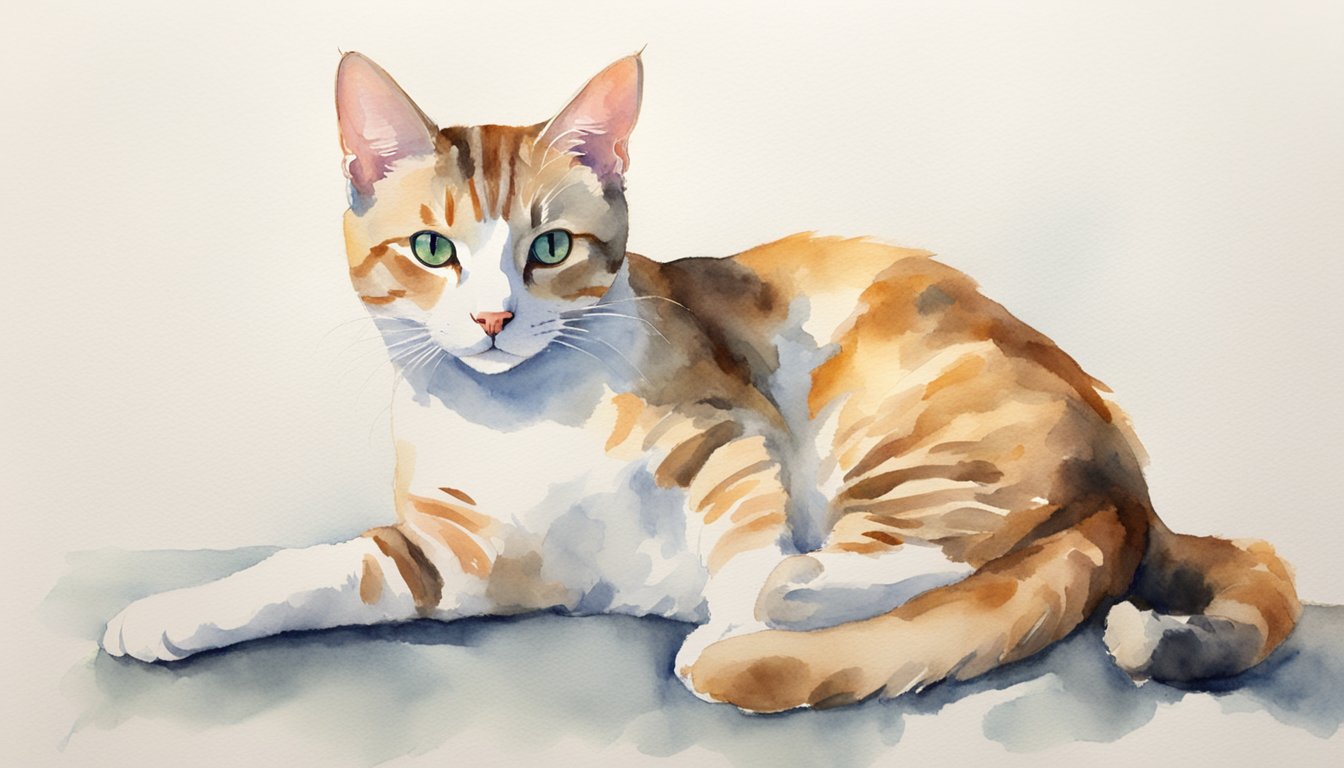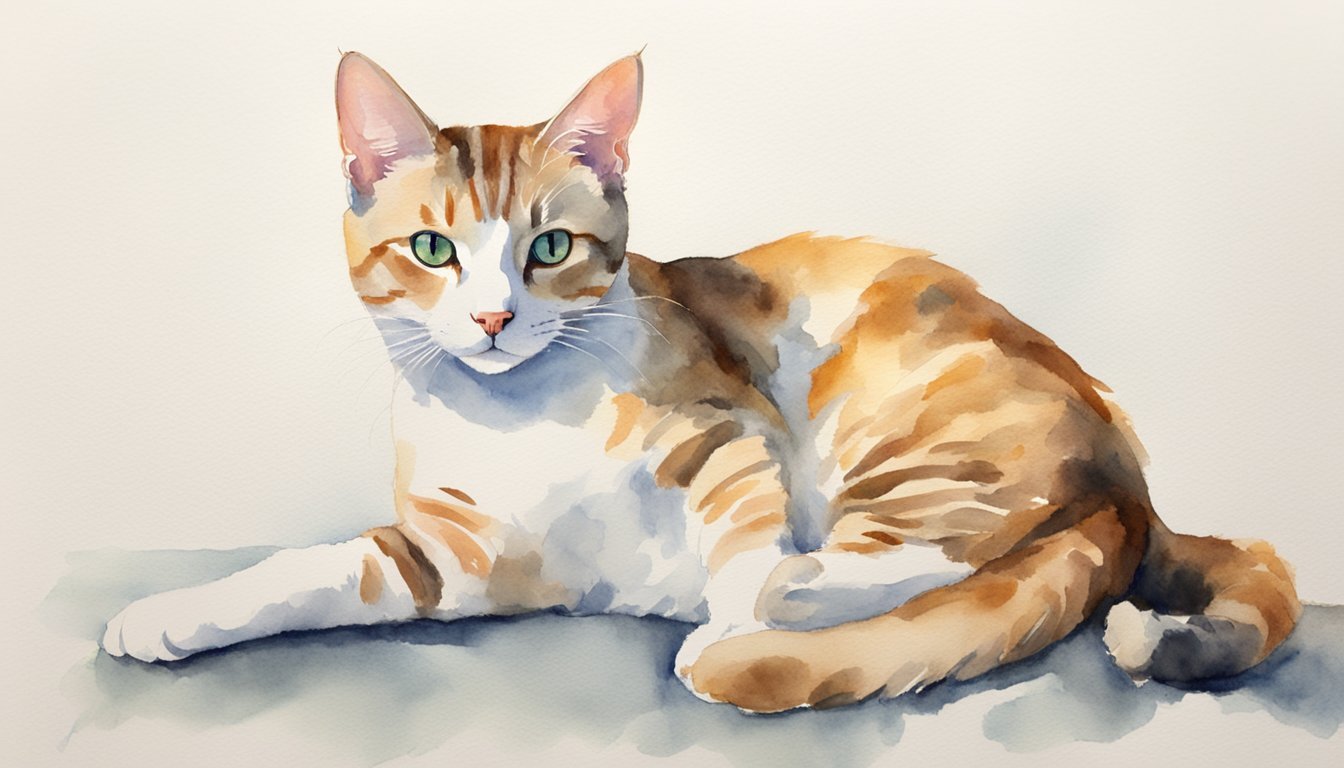Understanding Splooting
When you see animals stretched out with their hind legs behind them, they’re not just being cute; they’re splooting! This adorable pose has both charm and purpose.
Defining the Sploot
A sploot is a type of stretch that many animals, especially pets like cats and dogs, are known for. It occurs when an animal lies on its belly, often with the front legs stretched forward, and extends its hind legs straight behind the body. This splay-legged pose isn’t just endearing to human onlookers; it also serves a practical function for the animals that perform it.
Animals Known for Splooting
While the sploot is widely associated with dogs, particularly corgis who have become internet-famous for this behavior, other animals are known to assume this position. Cats often sploot, and even squirrels have been spotted in the middle of a sploot on a hot day. The act of splooting spans across various members of the animal kingdom, signifying that this charming behavior is more common in nature than one might assume.
Splooting and Body Temperature Regulation
Splooting isn’t just for show; it has a physiological benefit, primarily aiding in body temperature regulation. On warm days, animals may sploot on cool surfaces to lower their body temperature as heat dissipates from their exposed belly and through their splayed hind legs. This natural method of cooling down showcases the ingenuity of animals when it comes to managing their comfort and wellbeing.
Each sploot offers a peek into the animal’s innate ability to care for itself, charming onlookers along the way.
Behavioral and Physiological Aspects

Splooting, the behavior where an animal lies on its belly with hind legs stretched out, is more than a cute display; it’s linked with environmental factors and has real impacts on an animal’s physiology and health.
The Role of Weather and Environment
On hot days, animals such as dogs are often seen splooting on cool surfaces. This behavior is a practical method of heat dumping, allowing them to lower body temperature as they press their bellies to the ground. As temperatures rise, possibly due to climate change, observing animals splooting might become more common. They don’t have the same sweating mechanisms as humans, so they resort to methods like splooting to stay comfortable in the heat.
Health Benefits and Potential Issues
Splooting can also be a sign of great flexibility or, conversely, a symptom of discomfort such as hip dysplasia in some animals. It’s important to monitor if an animal is splooting due to discomfort, especially in breeds prone to hip issues. Additionally, this position can aid in cooling and provide a stretch, potentially serving as a relief from the discomfort. With rising awareness of the impacts of global warming, understanding these behaviors could serve as indicators of an animal’s attempt to adapt to uncomfortable changes in their environment.
It’s crucial to observe if splooting behavior leads to any issues, as it could indicate underlying health problems that may require attention.
Cultural Impact and Research

Splooting, a term that refers to the act of an animal lying flat on its belly with its hind legs stretched out behind, has captured both public fascination and academic interest in recent years. This behavior is not only adorable but also intriguing to those studying animal physiology and behavior.
Popularity on Social Media
On social media platforms, splooting is often celebrated for its cuteness, with countless pet owners sharing images and videos of their furry companions in this relaxed posture. Social media has amplified the popularity of splooting, making it a viral sensation and a term well recognized by pet enthusiasts around the world. For example, platforms like Instagram and Facebook are filled with pictures of dogs and cats in mid-sploot, often trending with various hashtags and eliciting countless likes and comments from amused followers.
Scientific Studies and Opinions
While social media buzzes with splooting pictures, veterinarians and researchers view this behavior from a more analytical lens. According to Andrea Rummel, a researcher from Rice University, splooting can be indicative of a pet feeling extremely comfortable and at ease in their environment. It’s also studied as a potential thermal regulatory mechanism, especially in dogs, which may sprawl out on cool surfaces to help lower their body temperature. The National Park Service suggests that even wild animals, like bears and squirrels, are observed splooting, supporting the idea that it’s a common posture across various species for comfort and cooling. However, there’s a consensus among veterinarians that, while generally normal, persistent splooting accompanied by signs of discomfort could warrant a vet visit to rule out any underlying issues.

